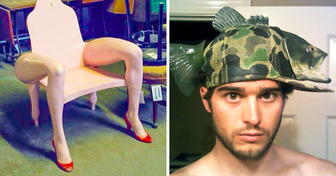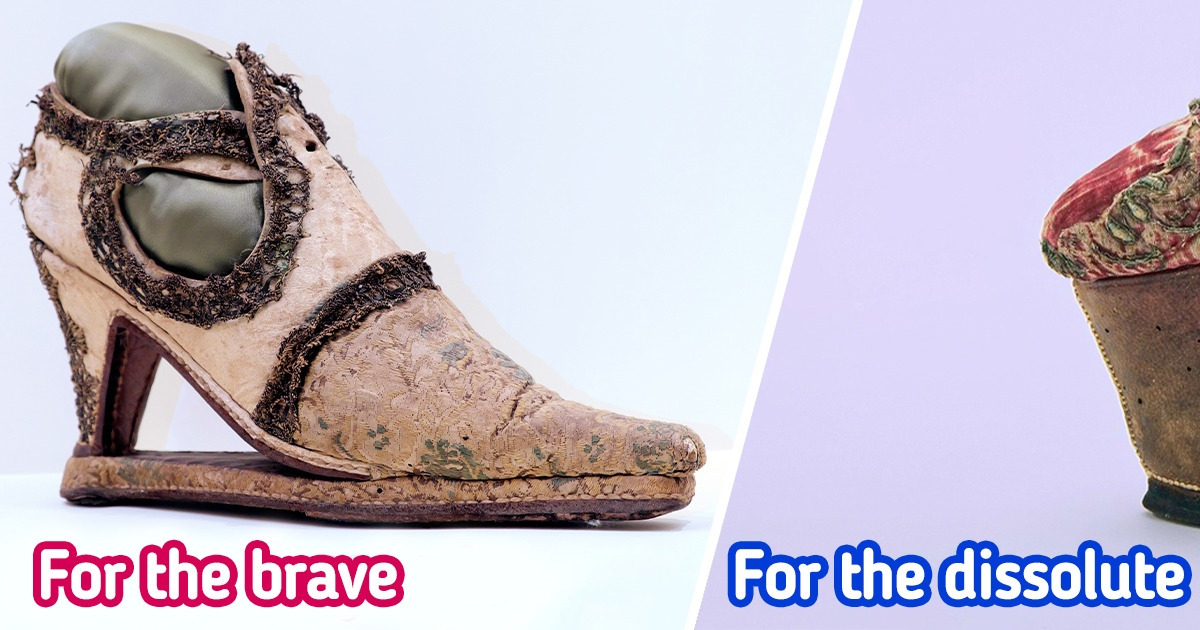Some of the photos you will see below can surprise any fan of comfortable sneakers and soft loafers — it’s hard to imagine how to wear these weird shoes made from wood and metal, complete with spikes and bells. The fashion of the past hasn’t been very kind to people, just see for yourself.
Paduka is a type of open footwear that is 5,000 years old. In India, people still wear these. Both the shoes and even their prints are considered divine in Buddhism and Hinduism.
These baby sandals are 3,000 years old from Egypt.
Namakshin — these are a type of old rubber boots. It’s Korean footwear for rainy weather, which lasted from 220 C.E. to 280 C.E.
Even though chopines would demonstrate a high social status, women would hide them under their skirts. They were supposed to be shoes for the dissolute, but they were still popular in Italy during the sixteenth and seventeenth centuries.
These are shoes with slap-soles from the seventeenth century. The heel was very high, so the shoes were only for the brave.
These sabots for the sauna would prevent slipping on wet floors and indicate the wearer’s high social status. They are called qabqab because of the clacking noise they make. They’re from Turkey, 1800-1850.
This is foot binding that Chinese girls would wear from childhood to prevent their feet from growing in China, 1800-1943.
200 years ago, women would ride horses only on a sidesaddle. And these were the stirrups from Peru during the eighteenth century.
These are Manchu platform shoes. The shoe was a way to evoke elegance in women. They were ornamented with jewels and bells in order to draw attention, from China in the mid-1800s.
These sabots with bells were for wearing at home. They belonged to an Armenian woman that immigrated to Syria at the end of the nineteenth century.
Stocking boots from Sweden or Germany at the end of the nineteenth century
Yes, these are shoes too. They are wooden sandals that might have belonged to Fumo Omari, a sultan of the coastal state of Witu in Kenya during the nineteenth century.
Klomp — these were traditional Dutch footwear made from wood. They are still worn by some farmers and gardeners. They originated in the Netherlands in 1948.
Ichigi are leather boots on thin soles worn by men and women at home in Kazakhstan during the 1900s.
Loafers with thin embroidery from golden threads, Pakistan, 1900-1930
Men would carve these sabots from a single piece of wood and give them to their brides as a symbol of commitment. They believed that the longer the tip was, the stronger their feelings were. They’re from France at the beginning of the twentieth century.
These are embroidered shoes by Jean-Louis François Pinet, the most famous shoe manufacturer of France from the end of the nineteenth century.
Men’s wedding boots from the South Moravian Region (the Czech Republic)
Sandals with giant pompoms were the traditional shoes of the indigenous people, Wayu, of Northern Venezuela and Columbia in 1980.
Do you have a favorite pair of shoes you’re constantly wearing?













